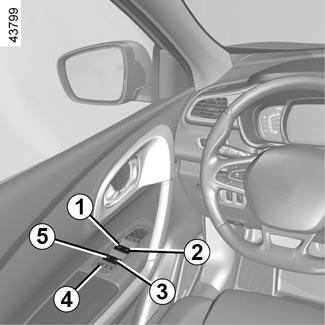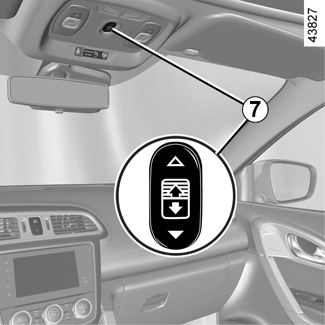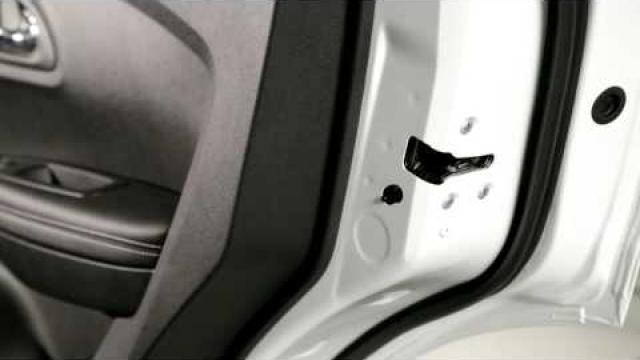ELECTRIC WINDOWS, FIXED SUNROOF
These systems operate:
- with the engine running;
- with the ignition off until one of the front doors is opened (limited to approximately twelve minutes);
- with the engine off, front doors closed, after pressing the start button.
Press the window switch down or pull it up to lower or raise the window to the desired height: the rear windows do not open fully.


From the driver’s seat, use switch:
1 for the driver’s side;
2 for the front passenger side;
3 and 5 for the rear passenger windows.
From the passenger seats, use switch 6.
Passenger safety
The driver can prevent all occupants from operating the rear passenger electric windows by pressing switch 4.
Driver’s responsibility
Never leave your vehicle with the card or key inside when there is a child, dependent adult or a pet in it, even for a short while. They may pose a risk to themselves or to others by starting the engine or activating equipment (such as the gear lever or electric windows). If any part of the body becomes trapped, reverse the direction of the window immediately by pressing the relevant switch.
Risk of serious injury.
Avoid resting any objects against a half-open window: there is a risk that the electric window winder could be damaged.
One-touch mode
This mode works in addition to the operation of the electric windows described previously.
Briefly press or pull a window switch as far as it will go: the window will be raised or lowered fully. Pressing the switch again stops the window moving.
Impossible to operate the one-touch electric window
The one-touch electric window is equipped with heat protection: if you press the switch for the window more than sixteen consecutive times it goes into protection mode (locking the window).
You can:
- use the electric window switch briefly and with intervals of approximately 30 seconds;
- with the engine running, the window will be unlocked after approximately 20 minutes of inaction on the electric window switch.
Note: if the window detects resistance when closing (e.g.: branch of a tree, etc.) it stops and then lowers again by a few centimetres.
Remote control window closing
(vehicles with 4 one-touch electric windows).
When the doors are locked from the outside:
- if you press the driver’s door lock button twice,
or
- if you press the locking button on the card twice in succession while in hands-free mode,
all the windows and, depending on the vehicle, the sunroof will close automatically.
It is recommended that the user only operates the system when the vehicle can be seen clearly and no one is inside.
When closing the windows, ensure that no part of the body (arm, hand, etc.) is protruding from the vehicle.
Risk of serious injury.
Operating faults
In case of a fault when closing a window, the system reverts to normal mode: pull the switch concerned up as often as necessary to fully close the window (the window will close gradually), hold the switch (still on the closure side) for one second then lower and raise the window fully to reinitialise the system.
If necessary, contact your authorised dealer.

Fixed glass roof
Opening the blind
Pull the switch 7 and put it to the desired position.
Closing the blind
Push the switch 7 and put it to the desired position.
Automatic operation
Quickly pull or push the switch 7 as far as it will go: the blind closes or opens fully. Using the switch stops the blind function in place.
Driver’s responsibility when parking or stopping the vehicle
Never leave an animal, child or adult who is not self-sufficient alone in your vehicle, even for a short time.
They may pose a risk to themselves or to others by starting the engine, activating equipment such as the electric windows or locking the doors, for example.
Also, in hot and/or sunny weather, please remember that the temperature inside the passenger compartment increases very quickly.
RISK OF DEATH OR SERIOUS INJURY.
